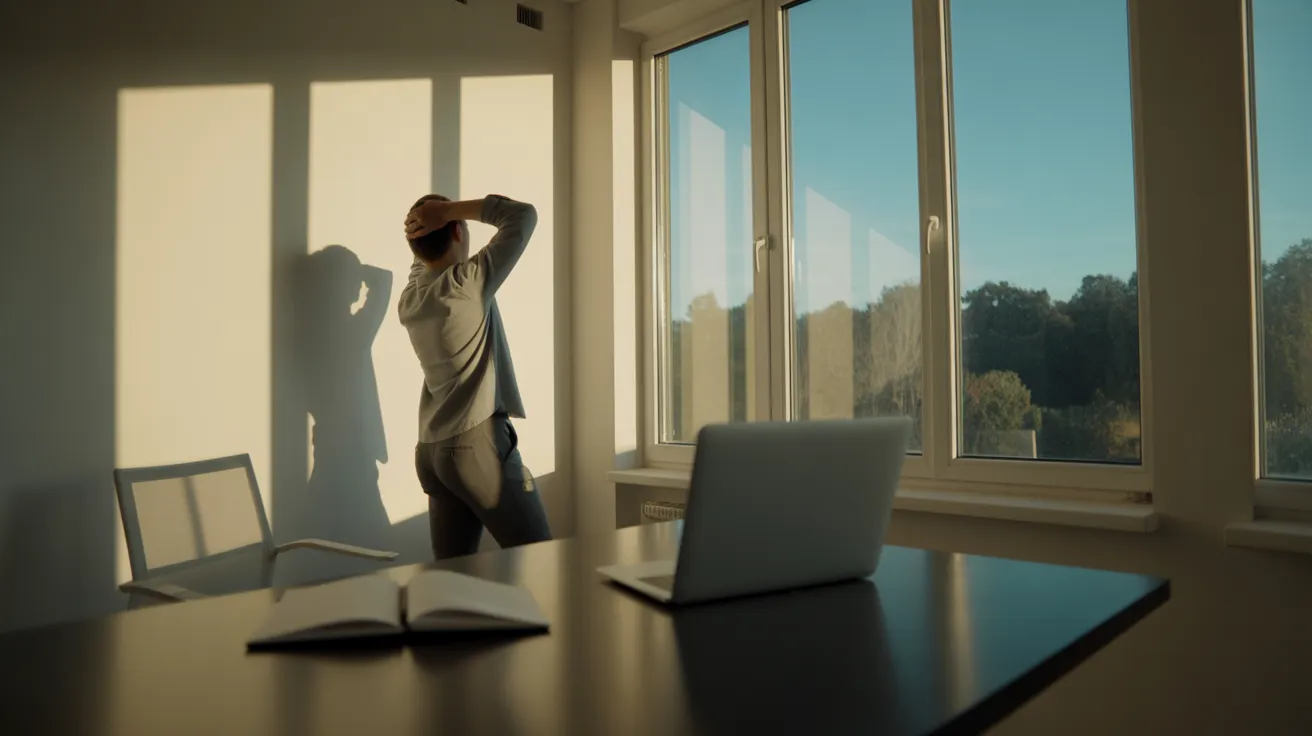
Another Sunday evening. You look at the week ahead, a chaotic blend of deadlines, meetings, personal errands, and that one nagging project you keep pushing back. It feels like a tidal wave about to hit. You know you need to get organized, but every system you’ve tried feels too rigid, too complicated, or completely disconnected from the fast-paced reality of your life. If you live and work in a busy city, you know that a plan made in a quiet moment can fall apart the second you step outside.
The problem isn’t a lack of effort. It’s the lack of a flexible framework. Many people think a planner is just a to-do list with dates, a static record of obligations. But that’s a mistake. A well-organized planner is your strategic partner. It’s a dynamic tool for allocating your most valuable resource—your time—with intention. It’s the difference between reacting to your day and commanding it.
This guide isn’t about fancy stickers or color-coding systems that require a legend to decipher. This is about building a pragmatic, powerful, and personal system to organize your planner. We’ll show you how to create a structure that bends without breaking, helping you navigate your professional and personal life with more focus, clarity, and control. It’s time to stop managing chaos and start designing your days.
📚 Table of Contents
- The Real Importance of a Planner: Your Shield Against Chaos
- The Setup: Building Your Command Center
- In Practice: A Day and a Week in a Focused Planner
- Handling Reality: Guardrails for When Things Go Wrong
- Optimization: The Weekly Review and Key Metrics
- Real-World Scenarios: Putting It All Together
- Frequently Asked Questions (FAQ)
- What if my day is mostly meetings? How can I use time blocking?
- How strict should my time blocks be?
- Is a digital or paper planner better?
- What if my job is reactive, like customer support or sales?
- How long should a time block be?
- Your First Steps to an Organized Week
The Real Importance of a Planner: Your Shield Against Chaos
Before we dive into how to organize your planner, let’s establish why it’s a non-negotiable tool for modern professionals and students. A planner isn’t about restriction; it’s about liberation. It frees up your mental energy from the low-level task of remembering everything you need to do, so you can focus on what actually matters: doing the work.
The Hidden Cost of “Winging It”
Without a system, your brain becomes your default planner. This is incredibly inefficient. You’re constantly engaging in context switching, which is the process of moving from one unrelated task to another. Think of it like closing a program on your computer and opening a new one—it takes time and processing power. According to research highlighted by the American Psychological Association, even brief mental blocks created by shifting between tasks can cost as much as 40 percent of someone’s productive time. When you’re trying to remember a dentist appointment while writing a report, you’re doing neither task well. Your planner acts as an external hard drive for your brain, holding all those details so your mind can stay clear.
A lack of planning also invites procrastination and decision fatigue. When you have a vague goal like “work on the project,” it’s easy to put it off. It feels too big and undefined. A planner forces you to break that down into a concrete, scheduled action: “Draft the project outline from 10 AM to 11 AM on Tuesday.” This simple shift from an abstract wish to a scheduled task dramatically increases the likelihood of it getting done.
The Core Method: Intentional Time Blocking
The foundation of The Focused Method is time blocking. This is the practice of scheduling your day into specific blocks of time dedicated to a particular task or group of tasks. Instead of an open-ended to-do list, you assign every task a home on your calendar. This simple act is transformative for several reasons.
First, it combats Parkinson’s Law, the adage that work expands to fill the time allotted for its completion. If you give yourself all day to write an email, it will take all day. If you give yourself a 25-minute time block, you’ll likely finish it in 25 minutes. This creates a healthy sense of urgency and focus.
Second, it encourages proactive, deep work. Instead of letting your inbox dictate your day, you carve out and protect time for your most important priorities. These are the tasks that move the needle, the ones that require sustained, uninterrupted concentration. Time blocking is how you ensure they happen. We’ll also incorporate elements of task batching—grouping similar small tasks together into one block—to further minimize context switching. Imagine answering all your emails in one 30-minute block instead of dipping in and out of your inbox a dozen times. The efficiency gains are immense.

The Setup: Building Your Command Center
Whether you choose a digital calendar like Google Calendar or a physical paper planner, the principles of setup are the same. Your goal is to create a clear, at-a-glance view of your time. This is one of the most crucial planner tips: a complicated system is a system you won’t use. Simplicity is key.
Digital vs. Paper: A Pragmatic Choice
The choice between digital and paper is personal. Digital calendars are excellent for collaboration, sending invites, and setting reminders. They are accessible from any device. Paper planners offer a tactile, screen-free experience that many find helps with memory and focus. Some of the most productive people use a hybrid system: a digital calendar for appointments and a paper planner for daily task management. Don’t overthink it. Pick one and commit to it for a month. You can always switch later.
The Color-Coding Framework
Color-coding is a powerful tool for quick visual processing, but it can easily become too complex. We recommend starting with a simple, four-category system. You can use these as a starting point for your planner organization.
Category 1: Deep Work (e.g., Blue). This is for your most important, high-concentration tasks. Think report writing, coding, strategic planning, or studying for a major exam. These blocks should be treated as sacred appointments with yourself.
Category 2: Shallow Work (e.g., Orange). This is for administrative tasks that don’t require intense focus. This includes answering emails, filing expense reports, or making quick phone calls. You should batch these tasks together in a single block.
Category 3: Meetings & Appointments (e.g., Red). This color is for any time you are committed to being with other people, whether in person or virtually. This includes work meetings, doctor’s appointments, and client calls.
Category 4: Personal Time (e.g., Green). This is for everything outside of work and obligations. It includes exercise, lunch breaks, family time, hobbies, and commute time. Scheduling this is not optional; it’s essential for preventing burnout and maintaining a healthy work-life integration.
Buffer Time and Travel
One of the biggest mistakes people make is scheduling things back-to-back. Real life has friction. A meeting runs five minutes over. Your train is delayed. You need a moment to grab water and reset your brain. Always schedule 5- to 15-minute buffers between blocks. If you have a 10 AM meeting and an 11 AM deep work session, schedule the work session to start at 11:10 AM. This buffer time is your system’s shock absorber. Similarly, always block out travel time as its own event. If it takes you 30 minutes to get to the office, put a 30-minute “Commute to Office” block in your calendar. It’s a real-time commitment, so it deserves a real spot in your planner.

In Practice: A Day and a Week in a Focused Planner
Theory is great, but let’s see how this works in practice. We’ll walk through how to organize your planner for a typical day and then zoom out to see how it looks over a week. The goal is not a perfect, rigid schedule, but a clear, intentional guide for your time.
A Walkthrough of a Single Day
Let’s imagine it’s Tuesday. You open your planner, which you prepared during your weekly review on Sunday.
7:00 AM – 8:00 AM (Green): Morning Routine. This block is for you. It could include exercise, meditation, reading, or just enjoying a quiet cup of coffee. You’re starting the day proactively, not reactively.
8:00 AM – 8:30 AM (Green): Commute & Plan for the Day. During your commute, you do a quick 5-minute review of your schedule. You confirm your top priority and visualize how the day will flow.
8:30 AM – 9:00 AM (Orange): Shallow Work Batch. You arrive at the office (or your home desk) and spend 30 minutes clearing urgent emails and messages. You are not aimlessly browsing your inbox; you are processing what’s necessary to clear the deck for focused work. The block ends, and you close your email tab.
9:00 AM – 11:00 AM (Blue): Deep Work Block 1 – “Draft Q3 Marketing Report.” This is your most important task of the day. Your phone is on silent, and notifications are off. This two-hour block is an unbreakable appointment.
11:00 AM – 11:45 AM (Red): Team Sync Meeting. You transition from your deep work, using a 5-minute buffer to review the meeting agenda.
11:45 AM – 1:00 PM (Green): Lunch & Walk. You have a full 75 minutes scheduled. You step away from your desk, eat without distraction, and take a short walk outside. This is a non-negotiable recharge period.
1:00 PM – 2:30 PM (Blue): Deep Work Block 2 – “Analyze User Feedback Data.” Another protected session for high-concentration work.
2:30 PM – 3:00 PM (Orange): Admin & Communication Batch. You check email again, respond to Slack messages, and make a quick phone call to confirm a vendor appointment. You handle all these small tasks at once.
3:00 PM – 4:30 PM (Red): Client Strategy Session. A scheduled collaborative meeting.
4:30 PM – 5:00 PM (Orange): Daily Shutdown. You spend the last 30 minutes of your workday planning for tomorrow. You review what you accomplished, move any unfinished tasks, and clear your desk. This ensures you leave work with a clear mind and can start fresh the next day.
The Weekly View: Rhythm and Flow
Zooming out, the week isn’t just a random collection of days. It has a rhythm. You might notice that you schedule most of your deep work blocks for Tuesday and Thursday mornings, as that’s when you have the most energy. Mondays are often filled with planning and team sync meetings. Fridays might have a lighter meeting load to allow for wrapping up weekly tasks and planning the week ahead. You’ve intentionally front-loaded your week with high-priority tasks and left room on Friday for overflow and review. This weekly planner organization provides a strategic overview, ensuring you’re not just busy, but busy with the right things.

Handling Reality: Guardrails for When Things Go Wrong
No plan survives first contact with reality. A client calls with an emergency. A colleague pulls you into an “urgent” issue. Your child gets sick. A perfectly organized planner is useless if it shatters at the first sign of disruption. The key is to build in guardrails—pre-defined rules for handling interruptions, overruns, and unexpected events.
The Art of Renegotiation
When an interruption occurs, your first job is to assess it. Is this truly urgent, or is it just someone else’s poor planning? If it’s not a true emergency, practice the art of renegotiation. Instead of dropping everything, you can say, “I’m in the middle of a focus block right now, but I can help you with that at 2:30 PM. Does that work?” This respects your time and their need, creating a new, mutually agreed-upon plan.
What if a task or meeting runs over its allotted time? This is where your buffer time helps. But if it’s a significant overrun, you have a choice to make. You can’t create more time, so you must trade it. Does the next task on your schedule get shortened, delayed, or delegated? Make a conscious decision. For example: “This meeting went 30 minutes over, which means I’ve lost my email batch block. I will move that to tomorrow morning and inform my team I’ll be offline for the rest of the day.” You are actively managing the deviation instead of letting it derail your entire day.
The “If/Then” Plan for Distractions
Proactively decide how you’ll handle common distractions. This is a powerful form of planner organization. Create simple “if/then” rules. For example:
If I get a non-urgent text message, then I will wait until my next scheduled break to check it.
If a colleague asks for “just five minutes” during a deep work block, then I will ask them to schedule a time on my calendar later.
If I feel the urge to check social media, then I will take three deep breaths and refocus on the task at hand for just five more minutes.
These pre-made decisions reduce the mental effort of resisting temptation in the moment. You’ve already decided what to do, so you just follow the script. Your planner isn’t just a schedule; it’s a commitment to yourself. These guardrails are how you honor that commitment, even when the world tries to pull you in a million different directions.

Optimization: The Weekly Review and Key Metrics
A planner system is not static. It’s a living document that should evolve with you. The most critical practice for ensuring your system works is the weekly review. This is a 30- to 60-minute appointment you schedule with yourself every week, typically on a Friday afternoon or Sunday evening, to reflect on the past week and plan the week ahead.
The Three-Step Weekly Review
Your weekly review should be simple and focused. It consists of three parts: Reflect, Strategize, and Schedule.
1. Reflect: Look back at the past week’s planner. What went well? Where did you feel most productive and energized? What didn’t get done? Why? Did you honor your personal time blocks? Were your time estimates for tasks accurate? This isn’t about judgment; it’s about gathering data. Be honest with yourself about what worked and what felt like a struggle.
2. Strategize: Look ahead to the coming week. What are your big priorities? Apply the 80/20 Principle, also known as the Pareto Principle, which suggests that roughly 80% of your results come from 20% of your efforts. Identify the vital few tasks that will deliver the most significant impact. These are your candidates for protected, deep work time blocks. Also, review any upcoming appointments, deadlines, and personal commitments.
3. Schedule: Now, open your planner for the next week and start populating it. First, block in your fixed appointments (meetings, appointments, etc.). Second, block in your personal time and self-care (exercise, breaks, family dinners). Finally, schedule your deep work blocks for those high-impact tasks you identified. Fill in the remaining time with blocks for shallow work and travel. You are creating a proactive plan, a roadmap for the week, before it even begins.
Metrics to Watch
To improve your planner organization, you can track a few simple metrics during your review.
Energy Levels: Don’t just track time; track your energy. Note which days and times you feel most focused. You may discover you’re a morning person who should schedule deep work before noon. Respecting your natural energy cycles is a powerful productivity hack. The Sleep Foundation emphasizes that proper sleep and alignment with your body’s circadian rhythm are foundational to cognitive performance.
Deep Work Ratio: How many of your scheduled deep work blocks did you complete without significant interruption? This number is a strong indicator of your ability to focus and produce high-quality work.
Rollover Rate: How many tasks did you have to move from one day to the next? A high rollover rate might mean you are being too optimistic with your time estimates or are not effectively protecting your time blocks from interruptions.

Real-World Scenarios: Putting It All Together
Let’s look at how two different people might apply these planner tips. The system is flexible enough to adapt to very different schedules and demands.
Scenario 1: The Hybrid Professional
Meet Sarah, a project manager who works from home three days a week and is in the office two days a week. Her biggest challenge is context switching between collaborative in-office days and focused remote days.
How Sarah organizes her planner:
Sarah uses a digital calendar with the four-color system. Her in-office days (Tuesday, Thursday) are heavy on Red blocks for team meetings, stakeholder check-ins, and collaborative workshops. She knows these will be lower-focus days, so she doesn’t schedule major deep work. She uses these days for building relationships and gathering information. Her commute is blocked out in Green. Her remote days (Monday, Wednesday, Friday) are dominated by Blue deep work blocks. On Monday morning, she has a two-hour block to plan her week and process inputs from the previous week. She batches all her Orange shallow work into a single block after lunch on her remote days. This intentional design allows her to align her tasks with her environment, maximizing both collaboration and concentration.
Scenario 2: The University Student
Meet David, a graduate student juggling classes, a part-time lab assistant job, and studying for comprehensive exams. His schedule is a mix of fixed commitments and large, unstructured blocks of time.
How David organizes his planner:
David uses a paper planner to minimize screen time when he’s studying. His fixed commitments—classes, lab hours—are entered first in Red. He then blocks out his most crucial study sessions in Blue. He knows from his weekly review that he is most alert in the mornings, so he schedules a 3-hour “Exam Prep” block from 8 AM to 11 AM three times a week. He uses the 80/20 Principle to identify the most critical topics to study. Smaller tasks, like responding to emails from his professor or preparing lab materials, are batched into an Orange block in the late afternoon. He also schedules Green blocks for going to the gym, meeting with friends, and a strict “no-studying” rule after 9 PM to protect his sleep, a crucial component of learning and memory consolidation, as supported by research available from institutions like the National Institutes of Health.

Frequently Asked Questions (FAQ)
What if my day is mostly meetings? How can I use time blocking?
Even in a meeting-heavy schedule, you can find pockets of time. First, block all your meetings in your planner (in Red). The white space that remains is yours to control. You might only have a 30-minute slot between calls. Instead of randomly checking email, turn that into an intentional Orange block for “Process High-Priority Inbox.” If you have an hour, make it a Blue block to work on the single most important task you have. You can also be proactive by declining meetings without a clear agenda or suggesting your input via email instead. The importance of a planner in this scenario is to make the most of the time you do control.
How strict should my time blocks be?
Think of your time blocks as a strong suggestion, not a rigid cage. The plan is a tool to guide your decisions, not a script you must follow perfectly. If a deep work session on one topic is flowing incredibly well, it might be worth extending the block and pushing the next task back. The goal is intentionality. The question to ask is: “Am I deviating from my plan for a good reason, or am I just getting distracted?” The weekly review will help you see if you are consistently over- or under-estimating time for certain tasks.
Is a digital or paper planner better?
There is no universally “better” option. The best system is the one you will use consistently. Digital calendars are great for sharing, reminders, and flexibility. Paper planners are excellent for focus, memory retention, and disconnecting from screens. Try a hybrid approach: use a digital calendar for appointments and meetings (the “hard landscape” of your day) and a simple notebook or paper planner for your daily time blocking and task management (the “flexible” part of your day).
What if my job is reactive, like customer support or sales?
For reactive roles, you can block your time by function. For example, a customer support agent might block 9 AM – 11 AM for “Live Chat Support,” 11 AM – 12 PM for “Follow-up Emails,” and 1 PM – 3 PM for “Phone Queue.” While you can’t predict the specific content of the work, you can create structure around the type of work you’ll be doing. This still helps reduce context switching and provides a predictable rhythm to an otherwise unpredictable job.
How long should a time block be?
The ideal length depends on the task and your attention span. For deep work, blocks between 90 and 120 minutes are often effective, as they allow you to get into a state of flow without leading to burnout. For shallow work, 30 to 45 minutes is usually sufficient. Experiment to see what works for you. The key is to have a clear start and end time, regardless of the duration.

Your First Steps to an Organized Week
You don’t need to implement this entire system overnight. The goal is progress, not perfection. A well-organized planner is a habit you build over time. This week, start small and focus on building the foundation. The clarity and control you’ll gain are more than worth the initial effort.
Here are three concrete actions you can take this week to start organizing your planner and reclaiming your time:
1. Choose Your Tool and Set Up Your Colors. Decide whether you’ll use a digital calendar, a paper planner, or a hybrid. Don’t spend more than 15 minutes on this decision. Then, set up the simple four-color system we discussed: one color for deep work, one for shallow work, one for meetings/appointments, and one for personal time.
2. Schedule Your First Weekly Review. Find a 30-minute slot on your calendar for this coming Friday or Sunday. Protect this time. During this session, your only goal is to look at the week ahead and schedule your most important commitments and just one or two deep work blocks.
3. Block Your Next Day. Don’t try to plan the whole week perfectly at first. Tonight, before you finish work, take 10 minutes to organize your planner for tomorrow. Assign a time and a color to every major task. Include your lunch break and your commute. See how it feels to wake up with a clear plan, even if it’s not perfect.
A planner is more than a schedule. It is a declaration of your priorities. It is the physical or digital manifestation of how you intend to live your life. By learning how to organize your planner, you are learning how to organize your focus, your energy, and your life around what truly matters.
Disclaimer: This article is for informational purposes only and does not constitute medical, financial, or legal advice. Please consult with a qualified professional for advice tailored to your specific situation.






